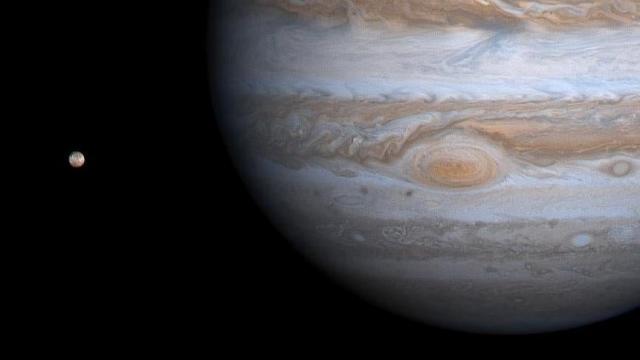A four-decade-long study documenting temperatures in Jupiter’s atmosphere using NASA spacecraft has revealed unexpected behaviour in the gas giant’s weather over time. NASA says the study is the longest ever to track temperatures in Jupiter’s troposphere.
According to NASA, Jupiter’s troposphere — the lowest region of an atmosphere — is a bit like Earth’s, in that this is the layer where most weather on the planet occurs. To research Jupiter’s troposphere, scientists observed the planet’s infrared glow, which is brighter for warmer areas in the atmosphere. The study began in 1978 and continued over the next four decades. Previous studies on Jupiter’s atmosphere typically covered periods shorter than the planet’s 12 year orbit; the long duration of the new work allowed researchers to weed out any possible seasonal variability. The research is published in Nature Astronomy.
“Measuring these temperature changes and periods over time is a step toward ultimately having a full-on Jupiter weather forecast, if we can connect cause and effect in Jupiter’s atmosphere,” said co-author Leigh Fletcher in a NASA press release. “And the even bigger-picture question is if we can someday extend this to other giant planets to see if similar patterns show up.” Fletcher is a professor of planetary sciences at the University of Leicester.
One of the team’s key findings is that temperatures at Jupiter’s mid-latitudes follow a reliable pattern of warming and cooling, but these variations are not likely due to seasons. Unlike Earth, which has well-defined seasons due to its axial tilt of 23.5 degrees, Jupiter tends to lack seasonality, since its axis is only tilted about 3 degrees.
The researchers also observed a temperature relationship between areas thousands of miles apart — when one set of latitudes in Jupiter’s northern hemisphere warmed up, the mirror-image set in Jupiter’s southern hemisphere got colder. Glenn Orton, lead author of the study and a senior research scientist at NASA’s Jet Propulsion Laboratory, called this result “the most surprising of all” in a NASA release.
“We found a connection between how the temperatures varied at very distant latitudes,” Orton said. “It’s similar to a phenomenon we see on Earth, where weather and climate patterns in one region can have a noticeable influence on weather elsewhere, with the patterns of variability seemingly ‘teleconnected’ across vast distances through the atmosphere.”
The next step for the researchers is figuring out the mechanisms behind these mysterious fluctuations.
“We’ve solved one part of the puzzle now, which is that the atmosphere shows these natural cycles,” said Leigh Fletcher. “To understand what’s driving these patterns and why they occur on these particular timescales, we need to explore both above and below the cloudy layers.”
